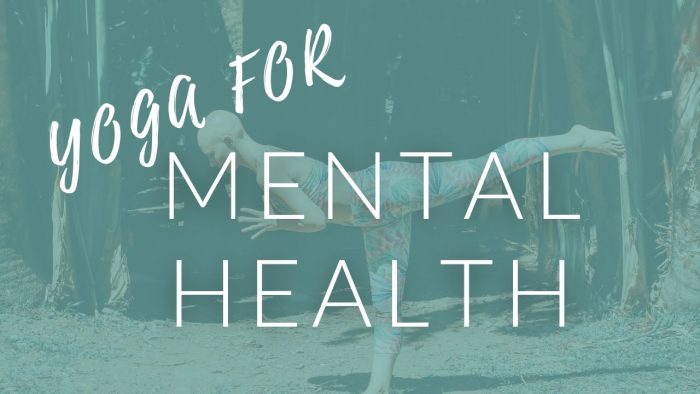Whether you’re struggling from anxiety or you’re working on developing more self-confidence, yoga might be what you’re missing on the path to healing. And the good news is, you don’t even have to have a daily practice to realize those benefits.
Did you know that two thirds of people with mental health conditions never get the treatment they need?
Treatments for mental health vary according to severity and the personal needs of the individual, with a combination of treatments often working best. Yoga for mental health is proving to be an invaluable part of those combination treatments.
I’ll tell you how often you should practice and how that practice will improve your mental wellness in this guide to yoga and mental health. Keep reading for more.
Do I need exercise to feel better?
Some of the physical benefits of exercise include better physical health, improved physique and waistline, and adding years to your life. But exercise is also an extremely important component of brain health.
Exercising improves blood flow to the brain and that leads to more clarity in your thoughts. It feeds the hippocampus and, as it grows in size, so too does your capacity for memory. Connections between nerve cells also improve with exercise, and that helps keep the brain protected from both injury and disease.
In terms of mental health, though, the most important consequence of exercise is that it causes your brain to release endorphins and serotonin. Increased levels of these “happy chemicals” vastly improves your mood. That has an impact on everything from stress and insomnia to depression and anxiety.
How Is Yoga For Mental Health Different From Regular Exercise?
The variety of yoga that’s most commonly practiced in the western world is known as Hatha yoga. Hatha yoga is the combination of physical poses (asanas) with controlled breathing and a period of relaxation of meditation at the beginning and end of the practice.
Of course, that physical practice is a valuable form of physical exercise. Asanas build flexibility, strength, and even balance. But besides the physical aspect of the asanas, it’s the breathing and meditation aspects of yoga that offer particular benefits to your mental health – benefits you don’t get in other forms of exercise.
So what makes breathing and meditation specifically beneficial?
Our autonomic nervous system is what regulates mental and emotional health. It’s comprised of the sympathetic and parasympathetic nervous systems. The former is responsible for our flight or fight response while the other is what brings us back to a state of calm.
There is only one part of this system that we have control over. That is, our breath. Conversely, it’s breath and meditation that help activate the parasympathetic nervous system.
Through the practice of yoga, we can learn to activate our parasympathetic nervous system. Over time, we can train out minds to access a state of calm, belonging, and ease, at will.
How yoga helps with the most common forms of mental wellbeing:
Through the physical practice and its emphasis on breath and meditation, yoga can improve mental wellbeing. Whether you’re simply stressed or you’re suffering from something more serious like anxiety or depression, yoga for mental health has proven benefits.
Yoga for Self-Confidence
Simply showing up to your yoga practice has implications for your self-confidence. Showing up to do something good for yourself is a subconscious cue. You’re telling yourself that your resilient on a subconscious level which eventually translates into your conscious thought patterns.
At the same time, getting up and moving helps to counteract both lethargy and agitation, common symptoms of depression and anxiety. It also gives you a chance to interact and socialize with others, which supports feelings of connectedness and increases the confidence you have in yourself.
Yoga and Anxiety
Yoga is beneficial for people suffering from anxiety, too. It accomplishes this through it’s connection to our parasympathetic nervous system. By emphasizing the breath and/or holding postures for long periods of time, we activate the parasympathetic nervous system and reduce symptoms of anxiety such as increased heart rate, blood pressure, and respiration.
Awareness also plays a part in relieving anxiety. Being aware of the moment allows an individual to observe their thoughts with more clarity and less judgement. One can become more neutral with their thoughts and that ability translates off the mat and into everyday life.
Yoga for Depression
The physical practice of yoga boosts your natural levels of serotonin. This chemical plays a key role in increasing your level of happiness. With more serotonin flowing through your body, you’ll feel happier.
Yoga also emphasizes awareness of the present moment, both during the meditation portion and while combining breath with movement. That gives individuals an opportunity to practice mindfulness and avoid the rumination of negative thoughts that are often present during depressive episodes. Breathing in and of itself is also thought to reduce symptoms of depression.
How Often Do You Need Yoga To Feel Better?
The good news is, the benefits of yoga for mental health don’t require a daily, vigorous practice. You don’t even have to sweat or lose your breath to start noticing the benefits.
To realize the physical and mental health benefits of yoga, you only need 30 minutes of practice five times per week. That can even be split into two 15 minute sessions or three 10 minute sessions.
And there’s even more good news: practicing yoga will increase the amount of energy you have. Meaning that, the more you do, the more energy you’ll have for exercising and other activity. All you have to do is commit to the practice.
Ready To Feel The Yoga Mental Benefits?
Your body and mind need physical exercise to perform at their best. But yoga has a unique ability to relieve the symptoms of mental illness or unwellness. A physical practice that emphasizes breath and mindfulness, it can improve the mental functioning of people suffering from anything from stress to depression.











Read 0 comments and reply